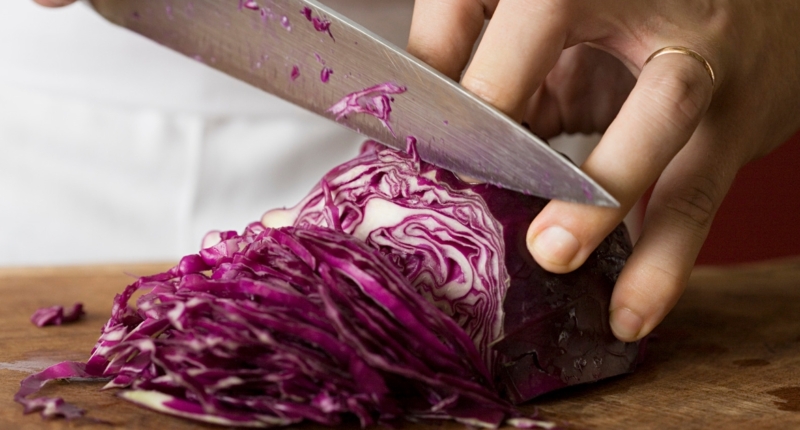Anthocyanins are natural, water-soluble chemicals that give many foods and flowers their vibrant purple or blue hue. Butterfly pea flowers, blueberries, and cabbage water are all rich sources of anthocyanins. By using these ingredients, it’s possible to create color-changing food that will dazzle and delight your dinner guests.
The color of these ingredients changes depending on the pH level of the environment. In an acidic, low pH environment, the color is pink, while in a basic, high pH environment, the color is blue or green. This knowledge can be used to create a range of visual effects in food, from ombre noodles to color-changing cocktails.
Overall, incorporating anthocyanin-rich ingredients into your cooking can elevate your dishes to a new level of magic and wonder. Whether you’re making a blueberry smoothie or using cabbage water to dye your noodles, the possibilities are endless.
The Power of Cabbage Water: Create Vibrant, Color-Changing Food
Are you looking to create color-changing food that pops with vibrancy? If so, then look no further than cabbage water. In fact, cabbage water is the secret weapon you need to turn your culinary dreams into reality.
Kyra Condie, a renowned rock climber from Minnesota, recently showcased the magic of pH indicators in a TikTok video. By adding lemon juice to red cabbage water, she turned a purple liquid pink. However, what she did not reveal in the video was that adding baking soda or soap would cause the pink liquid to turn purple-blue again. By using more baking soda, the color can deepen to a darker blue and eventually green.
The secret behind the color change is anthocyanin, a natural, water-soluble chemical found in red cabbage that provides a wide range of health benefits. Anthocyanin changes structure at different pH levels, causing the hue to change. In an acidic, low pH environment, anthocyanin molecules are protonated, resulting in a pink color. As the pH becomes more neutral, the molecules lose protons, absorb light from the yellow-orange spectrum, and turn purple before transitioning to blue, teal, and green as the pH becomes basic.
If you’re looking to make your cooked cabbage retain a bright purple color, simply add a splash of vinegar or citrus juice before serving. However, if you want a deeper purple or blue hue, blanch your cabbage in a baking soda bath. Understanding how pH affects the color of your cabbage will enable you to adjust the visual impact of your recipes.
In conclusion, cabbage water is an amazing tool to help you create vibrant, color-changing food. With this knowledge, you can transform your culinary creations into a visual feast that will have everyone talking about your dish.
Color-Changing Food with Anthocyanin-Rich Ingredients
Anthocyanins are responsible for the beautiful hues of naturally purple or blue foods and flowers such as butterfly pea flowers and blueberries. Empress Gin uses butterfly pea flowers to create color-changing cocktails, while Suncore Foods makes a beautiful blue pudding and homemade blue boba pearls. These ingredients could be swapped for cabbage water or blueberry juice.
Christine Liu demonstrates how to use cabbage water to create ombre noodles. By soaking rice vermicelli in cabbage water, they quickly take on a bluish-purple tint and turn pink in an acidic sauce. This concept could be applied to spring roll wrappers, resulting in a magic show as the rolls are dipped into a sesame ponzu vinaigrette. With anthocyanin-rich ingredients, your dinner will be a truly magical experience.
Don’t miss interesting posts on Famousbio









